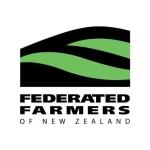Fat bee or skinny bee, you can be the difference
With no alternative to nature’s 100% Pure pollinator, Federated Farmers is highlighting that everyone can make a difference as to whether bees are ‘fat or skinny’, by planting trees for healthy bees.
“Just like all livestock, the health of bees reflects the protein and energy sources they have access to,” says John Hartnell, Federated Farmers Bees spokesperson.
“Good protein and nectar produces healthy and fat bees, much better placed to fly ahead in today’s post-Varroa world. Federated Farmers is keen to work with everyone to provide positive environments for the honey bee to flourish.
“Federated Farmers Bee Industry Group started a pilot project two years ago to determine the best pollen bearing trees and shrubs in each region.
“From this work, 10 regional planting recommendations were prepared and are now available on various industry websites, www.fedfarm.org.nz or by putting “trees for bees” into Google. It’s a great start to create your own bee friendly space.
“Federated Farmers is now working with the Sustainable Farming Fund and other industry groups to understand the true pollen value to bees, of all the plants available to the bee industry in New Zealand.
“Under the leadership of Landcare Research’s Dr Linda Newstrom-Lloyd, ‘Trees for healthy bees’ is working with beekeepers to trap pollen from different sites around the South Island.
“The fact is, honey bees need our help and everyone can pitch in.
“Even in deepest suburbia, the Trees for Bees planting guide can suggest appropriate trees and shrubs for homes and schools to plant. Farmers can plant bee friendly plants on unproductive land, like fenced off waterways, tight corners or steep hillsides.
“A farm environment comprising only fence posts and wire, or ‘low maintenance’ concrete in town, is absolutely hostile to bee life. For farmers especially, it means beekeeper support will not be forthcoming at pollination time.
“Speaking of farms, honey bees need sheltered flight paths that have traditionally been provided by a network of gorse hedges bordering properties. My message is that if you don’t have to remove a gorse hedge then leave it be. Gorse hedges provide a great source of nutritious pollen for bees.
“When cutting or trimming gorse hedges, leave one side each year to flower providing a much needed pollen source for the bees. This may be counter intuitive when dealing with a pest plant, but it’s necessary.
“It can also be managed as part of the farm plan while providing bees with the pollen equivalent of berroca. If you plant or look after trees for bees, it will make a difference,” Mr Hartnell concluded.
